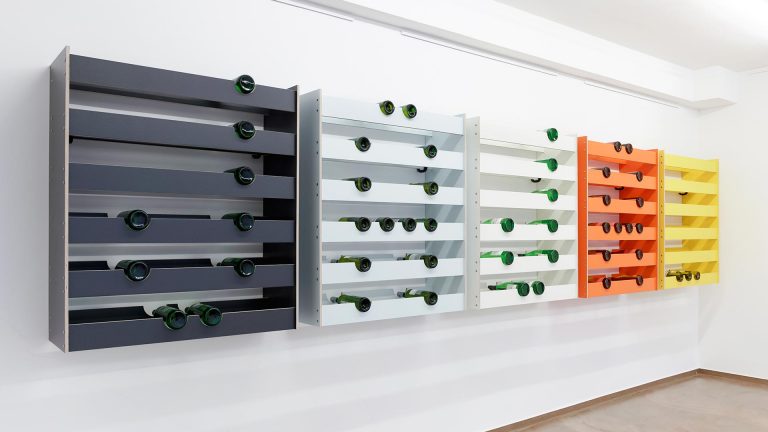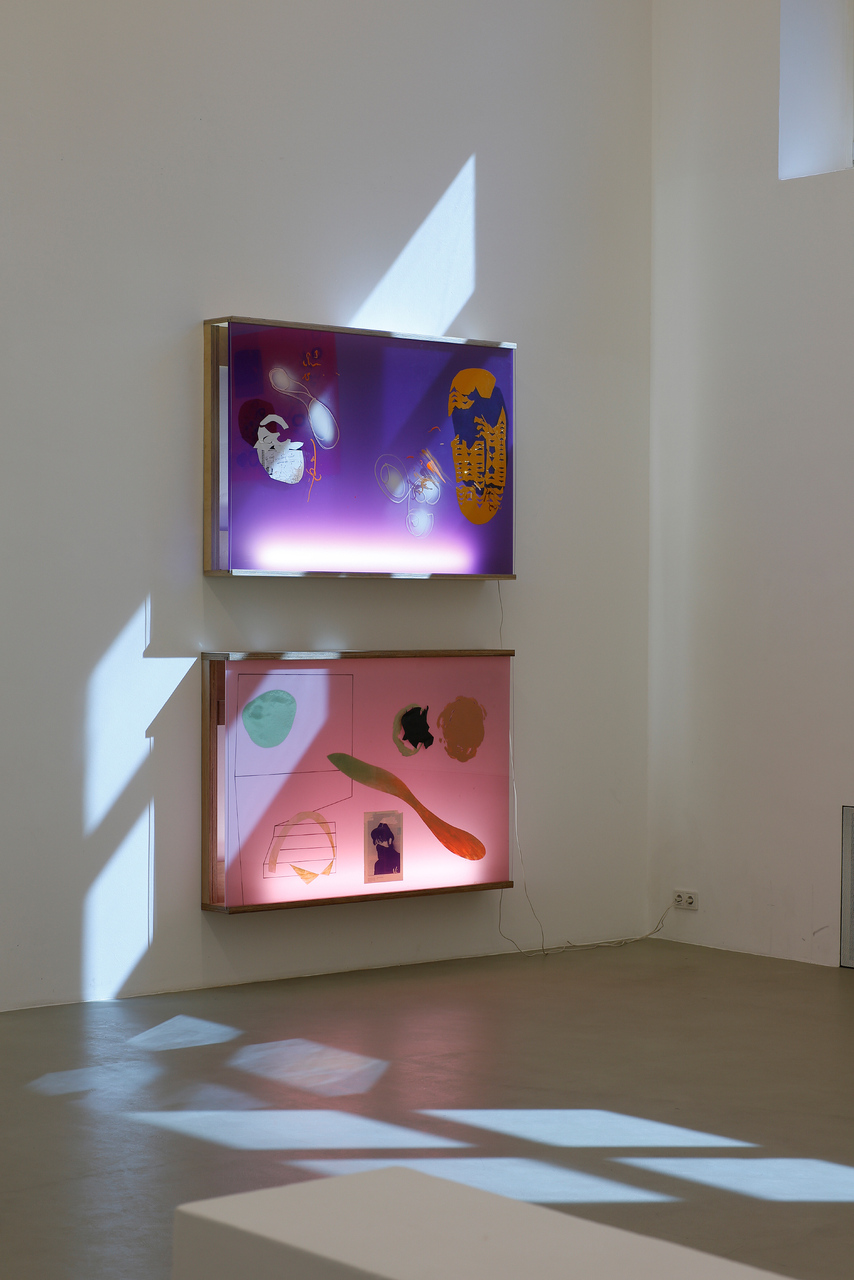Artist: Sophie Gogl
Exhibition title: She Brings The Pain
Curated by: Franziska Sophie Wildförster
Venue: Schwabinggrad, Munich, Germany
Date: October 14 – November 21, 2020
Photography: all images copyright and courtesy of the artist and Schwabinggrad, Munich
There is a certain moment, just before you open a can, and you can’t quite be sure which content will present itself. – Sophie Gogl, 2020
In She Brings The Pain, the first solo exhibition by Sophie Gogl in Germany, the Tyrolean artist presents a series of new works that continues her investigations into the relevance of painting in relation to its surrounding spaces – institutionally, socially and perceptually. Gogl depicts can lids in eclectic stylistic registers that, in conjunction with the first published auto-fiction text written by the artist, mediate conditions that inform identity, class and narcissistic tendencies.
In many ways She Brings The Pain is exemplary for Gogl’s practice, where the artist conglomerates and shuffles an array of auto-biographical moments and stylistic and textual references from art history and pop culture that she sources from media, specifically online, into complex narratives. In Gogl’s work, the question of how meanings are created and mediated through the perceptual and ideological mechanisms of the digital versus the pictorial plane is continuously contested. Working through her relationship with the canvas, the artist shifts between distance and self-identification, such as the adaptive painting styles testify to oscillations between conscious will and unconscious streams and absorption of an abstract plurality.
Various metaphorical – humorously and politically charged – values may have led to the thematic of the can. There is the hint to the German Krautrock band CAN (“She brings the rain”) of the post-war era and their anti-capitalist and anti-fascist sentiment, that, to the artist albeit ironically lingers in the name of the art space Schwabinggrad. The can is also a symbol of rationalization, conservation, catastrophe, and ultimately, class and value (In case of the apocalypse: would you rather have the actual can or an artwork depicting a can in your home?). And it is, in many rural parts still used as a derogatory term for women and their reproductive organs, which is likely an adaptation of the old vase-problematic to the Alpine area (think of the “Büchsenmacher”, the “can producer”, a man who only ‘makes’ girls).
On a more substantial level, however, the can represents an unresolved conflict between the container and the contained, picture plane and subject, political didacticism and formal withdrawal, and speaks to the artist’s interest in the desires that inform the production and consumption of images and (political) subjectivity. Gogl’s round canvases on wood make clear – the canvas is not a window. Quite literally the window, or can, is closed, however appealing it may be to tear it open and see beyond the mere surface. We are left with a fish fillet painted realistically on the lid and quite mockingly and self-referentially presenting itself as the image of content, rather than actual appeasement.
–Franziska Sophie Wildförster



















